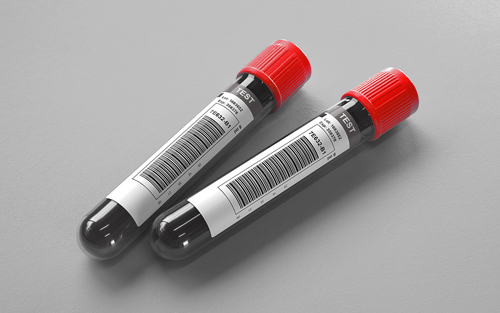
Ryan A. Metcalf, MD, CQA(ASQ), ARUP and University of Utah Health section chief of Transfusion Medicine, participated in the international platelet transfusion guideline panel.
The 2025 Association for the Advancement of Blood and Biotherapies (AABB) and the International Collaboration for Transfusion Medicine Guidelines (ICTMG) International Clinical Practice Guidelines were published by the Journal of the American Medical Association (JAMA) on May 29, 2025.
Ryan A. Metcalf, MD, CQA(ASQ), ARUP and University of Utah Health section chief of Transfusion Medicine and lead author, joined an international panel that included expert representatives from over 10 countries, patient partners, and expert methodologists. The panel evaluated data from 21 randomized trials and 13 observational studies, and they developed their recommendations in accordance with the Grading of Recommendations Assessment Development and Evaluation (GRADE) methodology.
“Our goal was to maximize benefit while minimizing risk,” Metcalf said. “The recommendation is overarchingly to implement restrictive platelet transfusion strategies, across at least the populations that were included in the guidelines.”
Platelet transfusions are commonly used to prevent or treat bleeding in patients with thrombocytopenia. In the United States alone, there are approximately 2.2 million platelet transfusions per year, said Metcalf.
All transfusions carry a risk of adverse effects, such as allergic, anaphylactic, or septic reactions or transfusion-associated circulatory overload (TACO). However, these adverse events occur more commonly after platelet transfusions.
Additionally, it’s difficult to maintain an adequate supply of platelet units, which only remain shelf-stable for approximately 5–7 days, and platelet units are also the most expensive component of blood.
The panel compared the outcomes from restrictive and liberal transfusion strategies and found that liberal strategies did not significantly improve the most important outcomes, including bleeding and mortality.
“In the absence of clear evidence of a benefit with liberal strategies for these most important outcomes, we moved to recommending restrictive strategies, given the unequivocal benefits, including avoiding acute adverse effects, maintaining adequate platelet supply for those most likely to benefit, and healthcare-related costs,” Metcalf said.
The updated clinical practice guidelines make strong recommendations for the following patient populations: nonbleeding patients with hypoproliferative thrombocytopenia actively receiving chemotherapy or undergoing allogeneic stem cell transplant, preterm neonates without major bleeding, those undergoing lumbar puncture, and those with Dengue-related consumptive thrombocytopenia in the absence of major bleeding.
The panel also provided conditional recommendations for seven additional patient populations.
Metcalf said that new guidelines were needed as it had been around 10 years since either the AABB or ICTMG had issued clinical practice guidelines for platelet transfusions. In that time, new studies and trials have provided additional evidence for consideration, and some of these trials suggested evidence of harm with platelet transfusion.
Most of the recommendations in the new guidelines are either new or represent practice-changing guidance compared to previous guidelines. For example, the prior AABB guidelines recommended platelet transfusion in the setting of lumbar puncture if the platelet count was <50,000/ul. Based on a new synthesis of evidence, the new guideline recommends a more restrictive threshold of <20,000/ul, given the exceedingly low rate of important bleeding events, even at very low platelet counts. In another example, the panel recommended no platelet transfusions for patients with nonoperative intracranial hemorrhage with platelet counts >100,000/ul, including those on anti-platelet agents, because trial evidence unexpectedly showed evidence of harm with platelet transfusion. In contrast, the prior AABB guidelines did not make a recommendation for this population.
Platelet transfusion practice trends have also diverged from other blood components, which have more recent guidelines.
“In the United States, red blood cell transfusions have decreased around 20–30%, even as the population has increased,” Metcalf said. “On the other hand, platelet transfusion rates have remained steady and, if anything, have increased by a little.”
Metcalf expects the adoption of these recommendations to substantially reduce unnecessary platelet transfusions.
Metcalf also appeared on the JAMA Clinical Reviews podcast with JAMA Executive Editor, Gregory Curfman, MD, to further explore this topic.
“It’s been an incredible experience. We had a large panel of people working on this from many different areas of practice and areas of the world, and everyone had the patients’ best interest in mind as much as possible,” Metcalf said. “It feels gratifying to know that it will impact a large number of patients worldwide.”
Kellie Carrigan, kellie.carrigan@aruplab.com
















